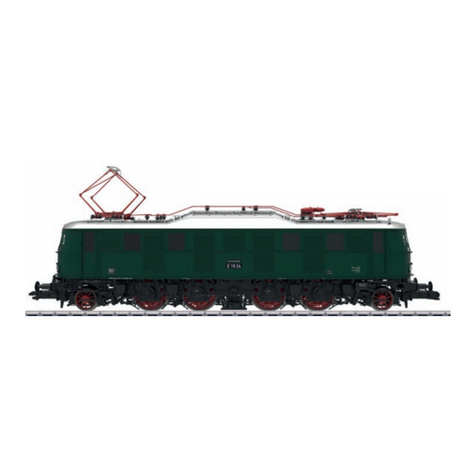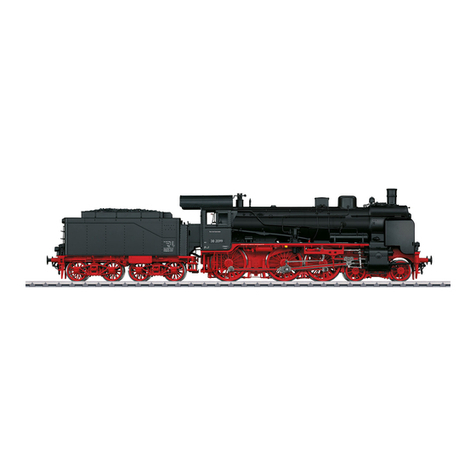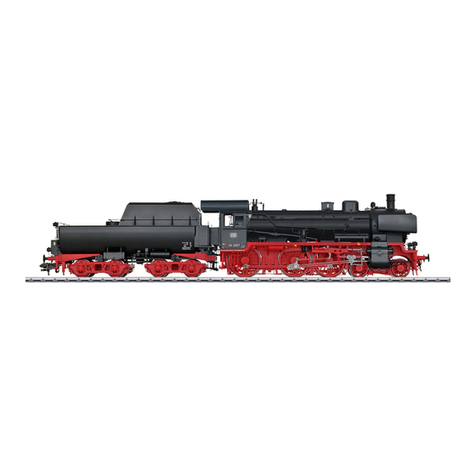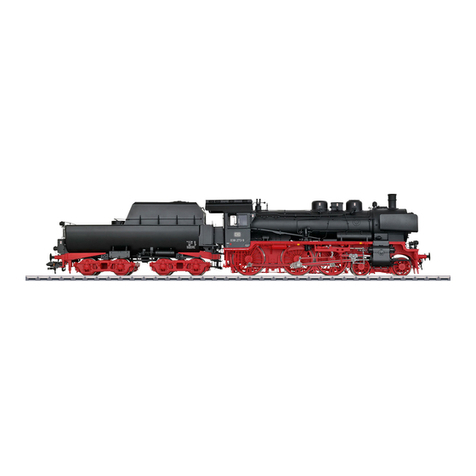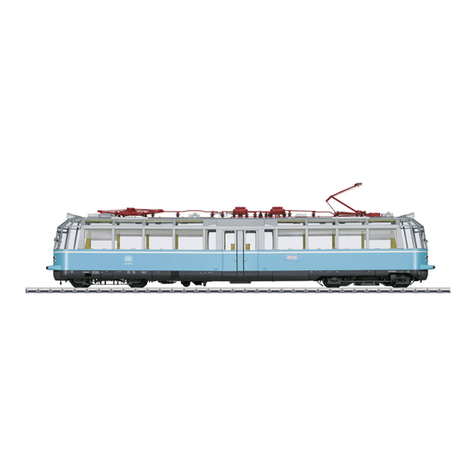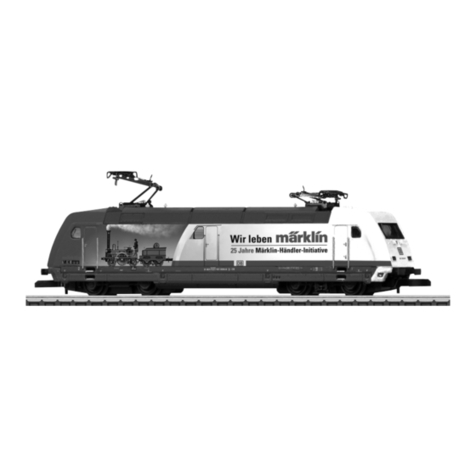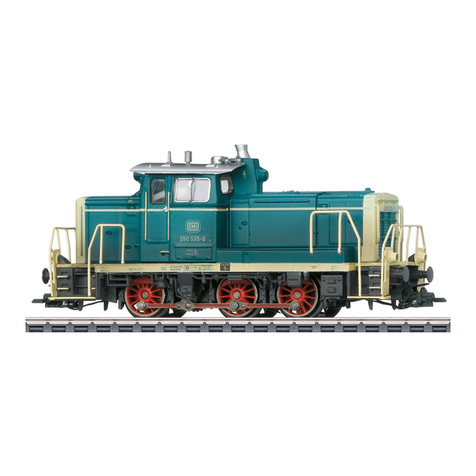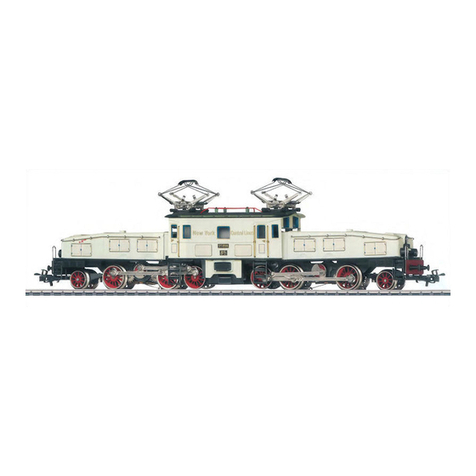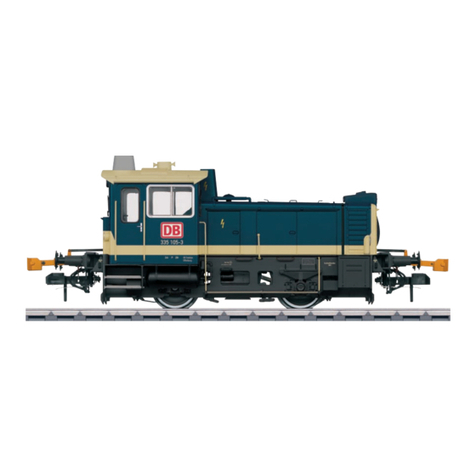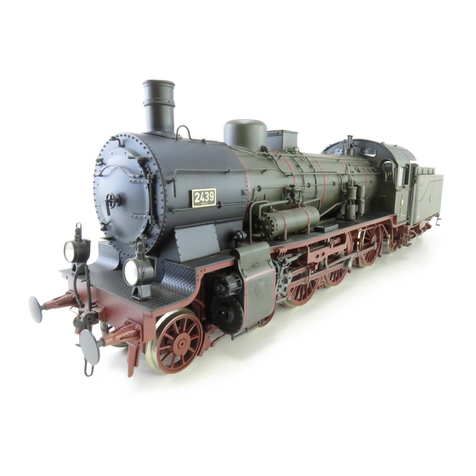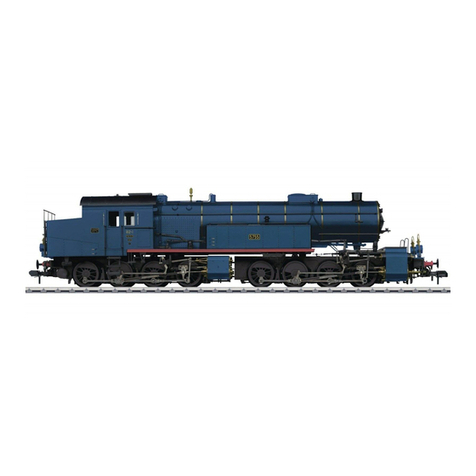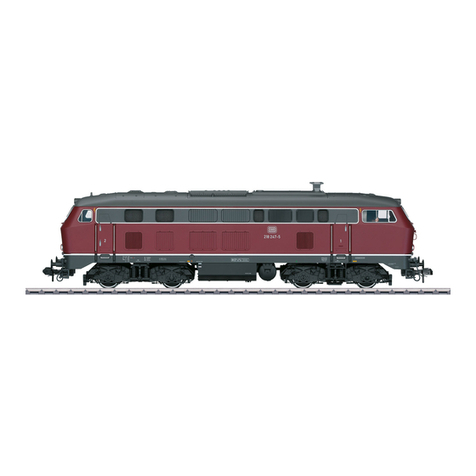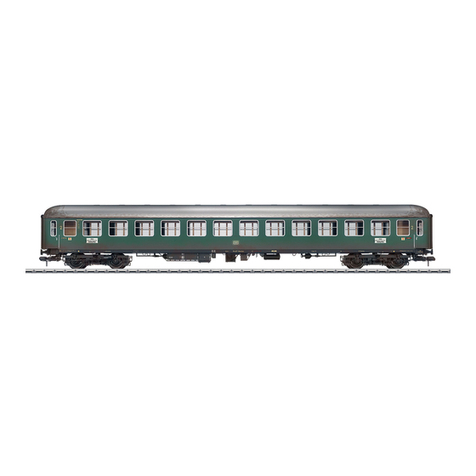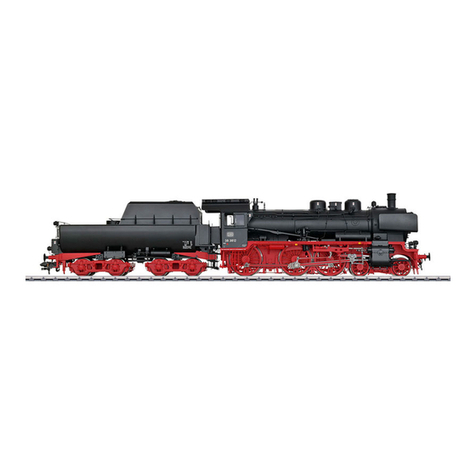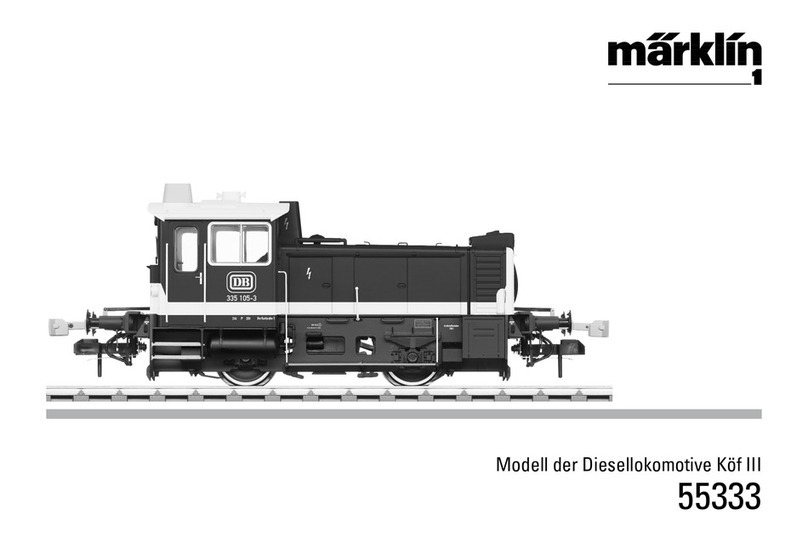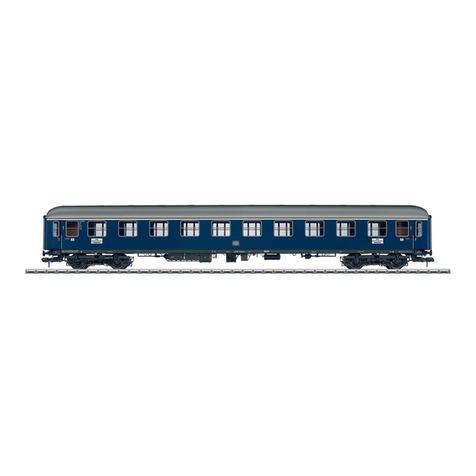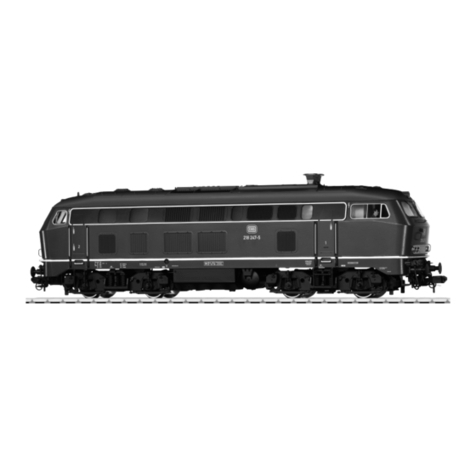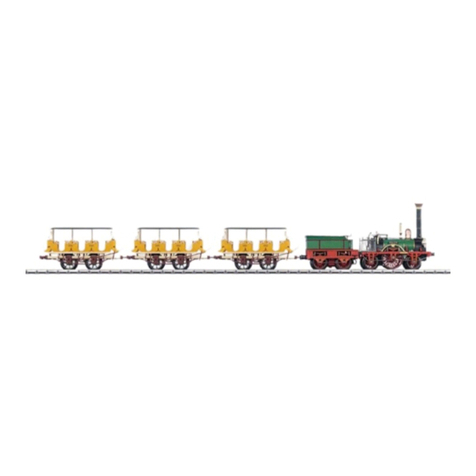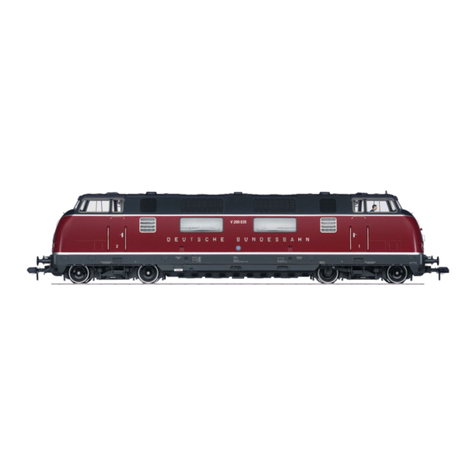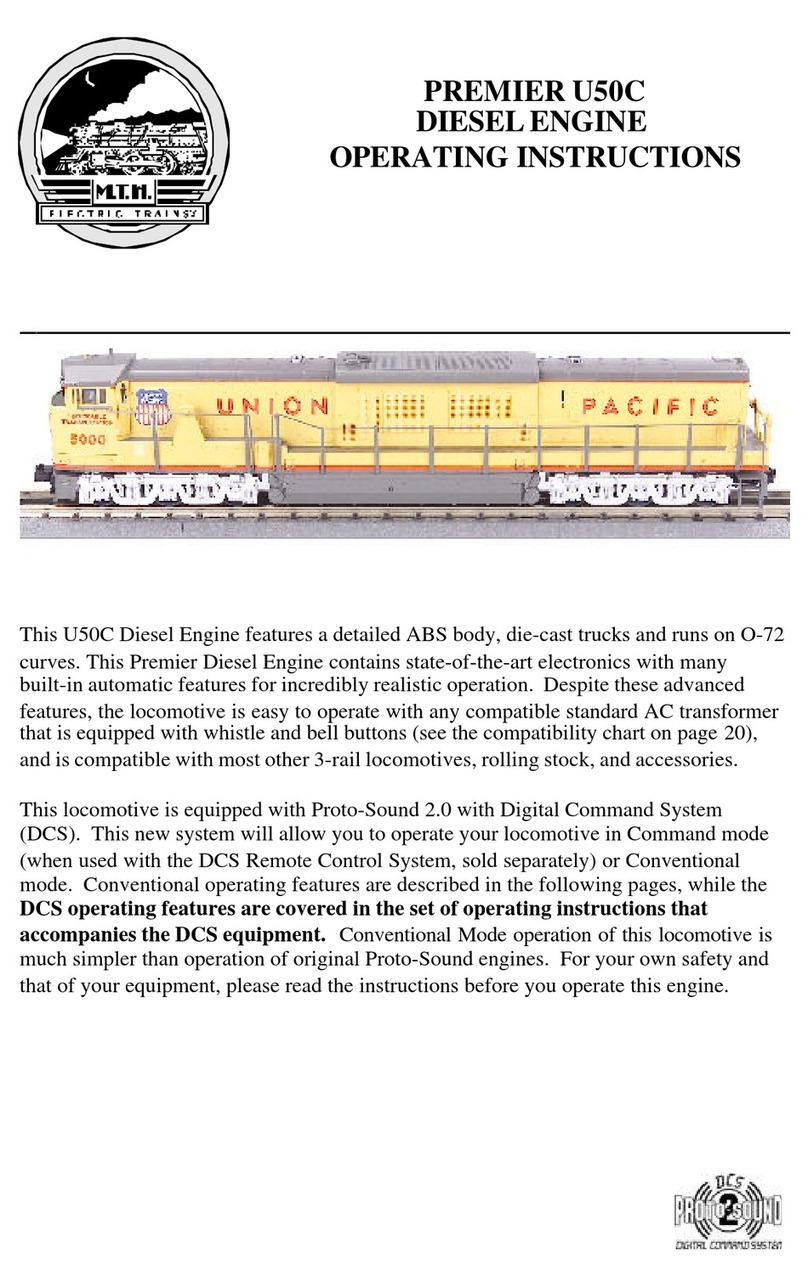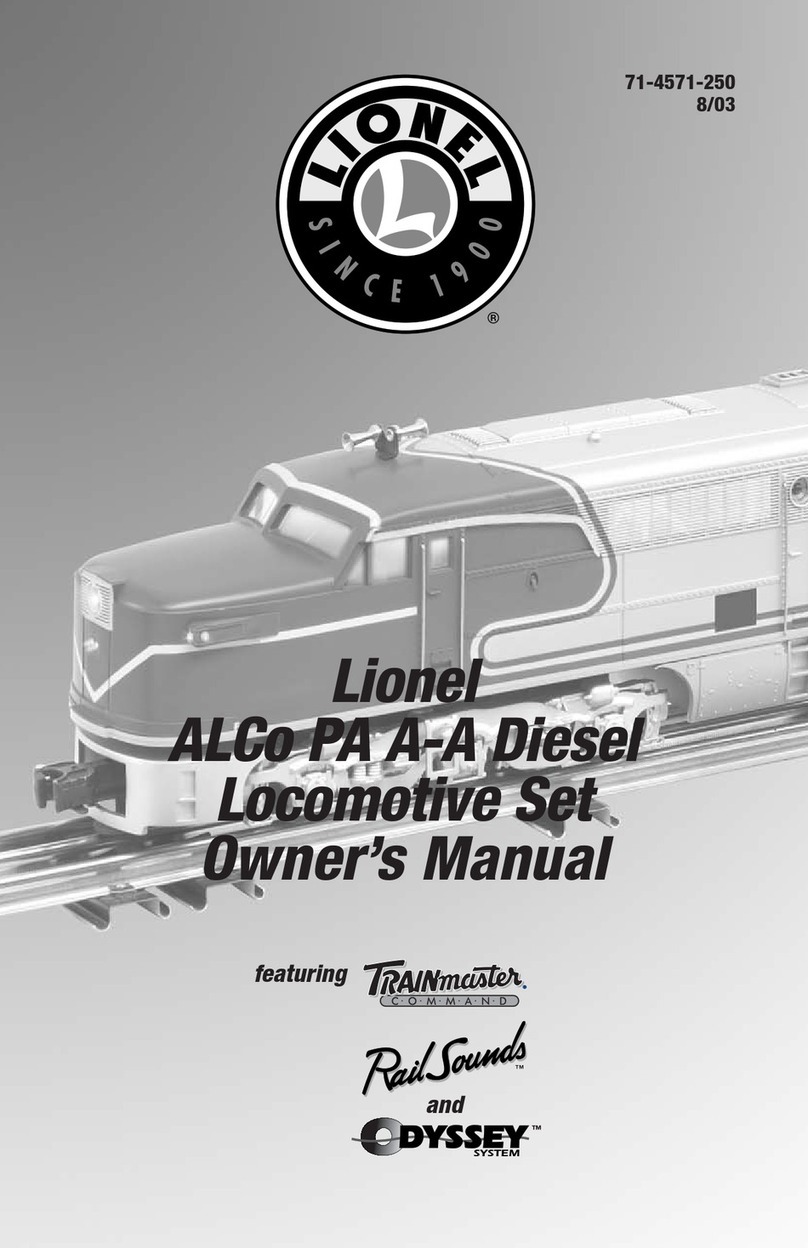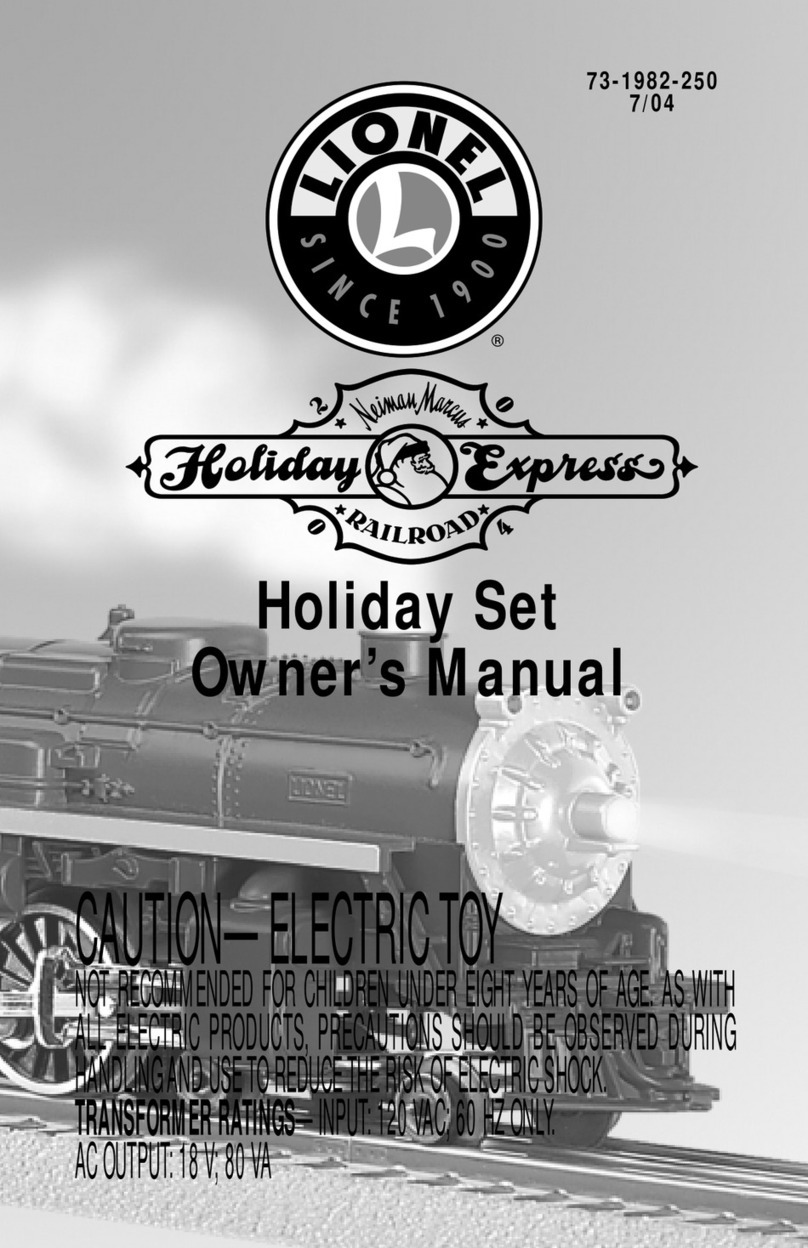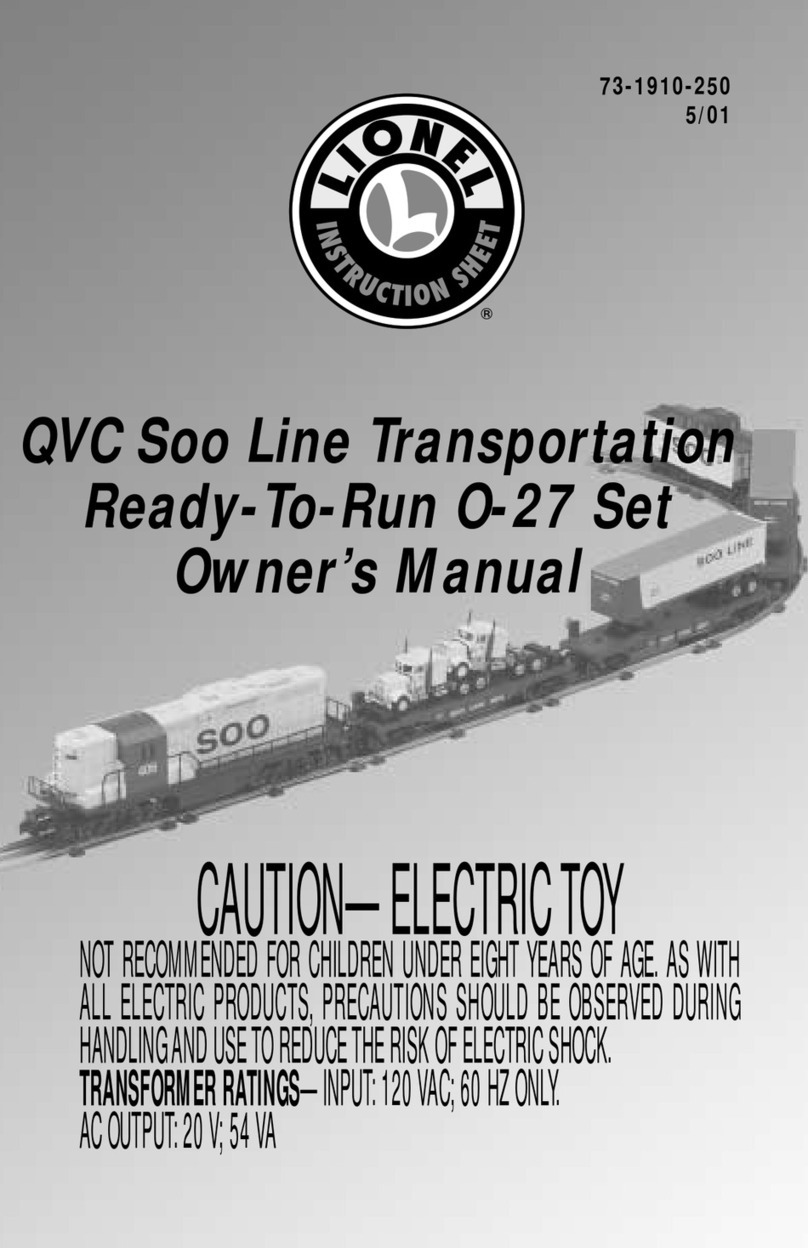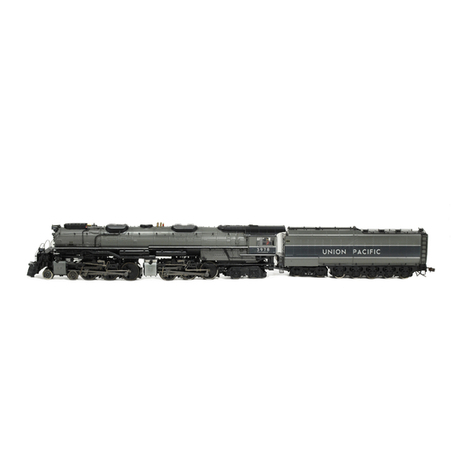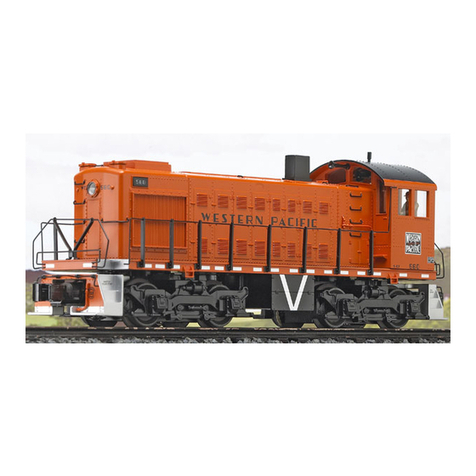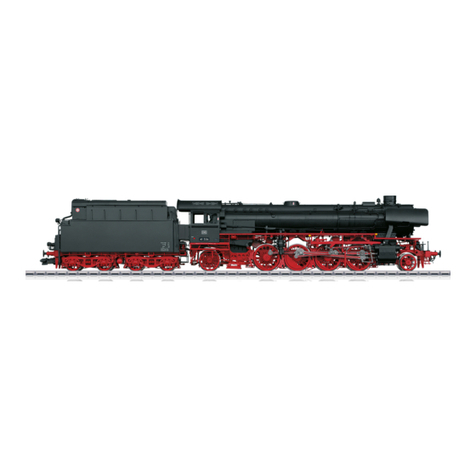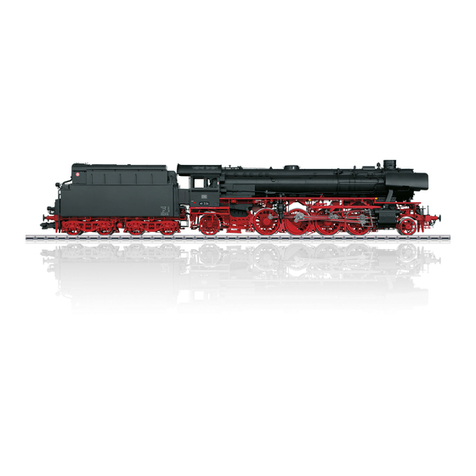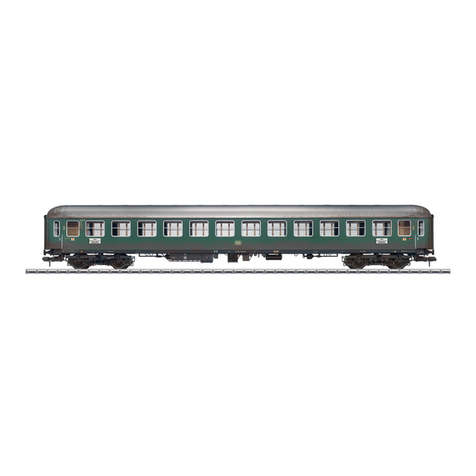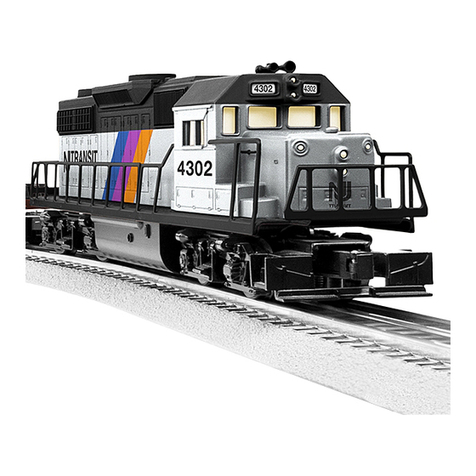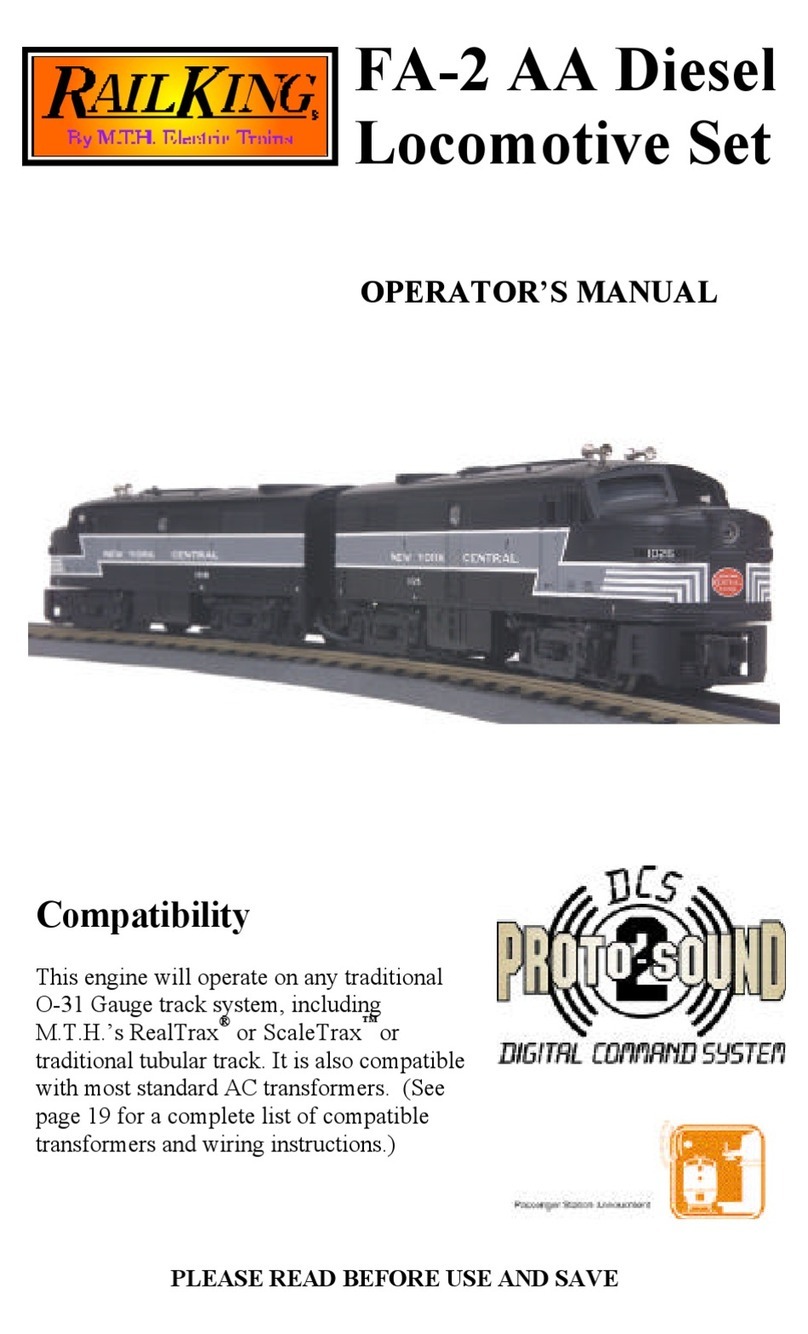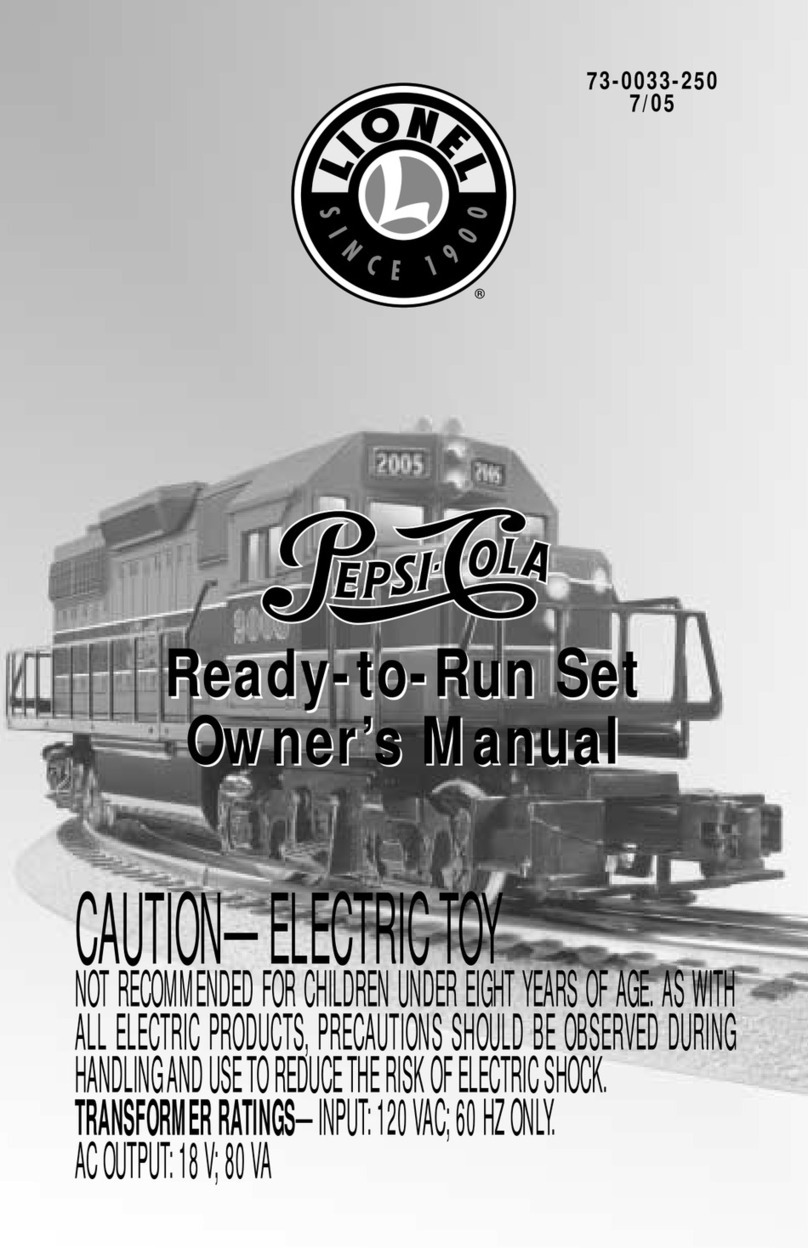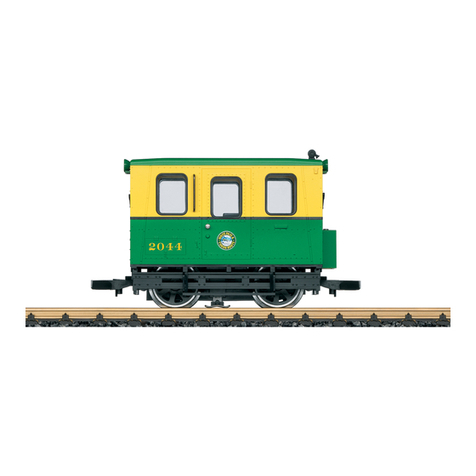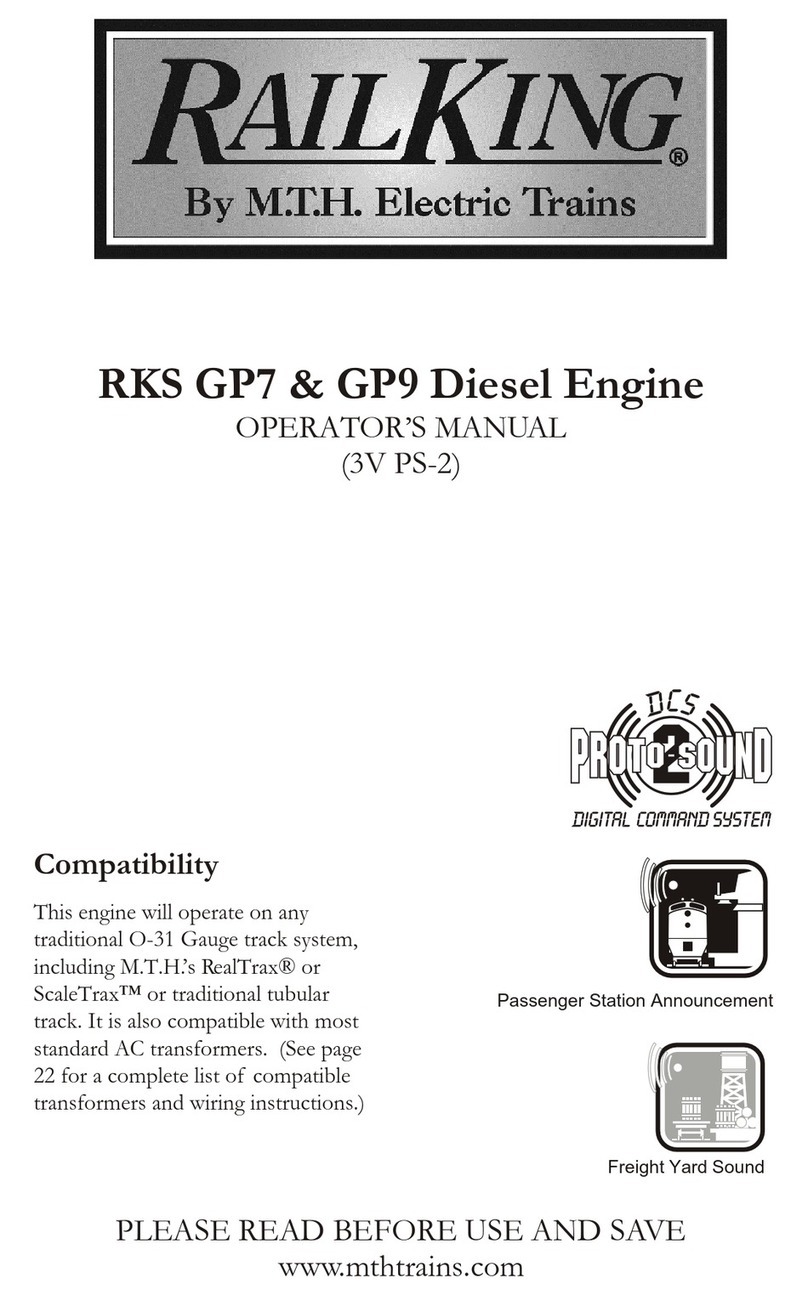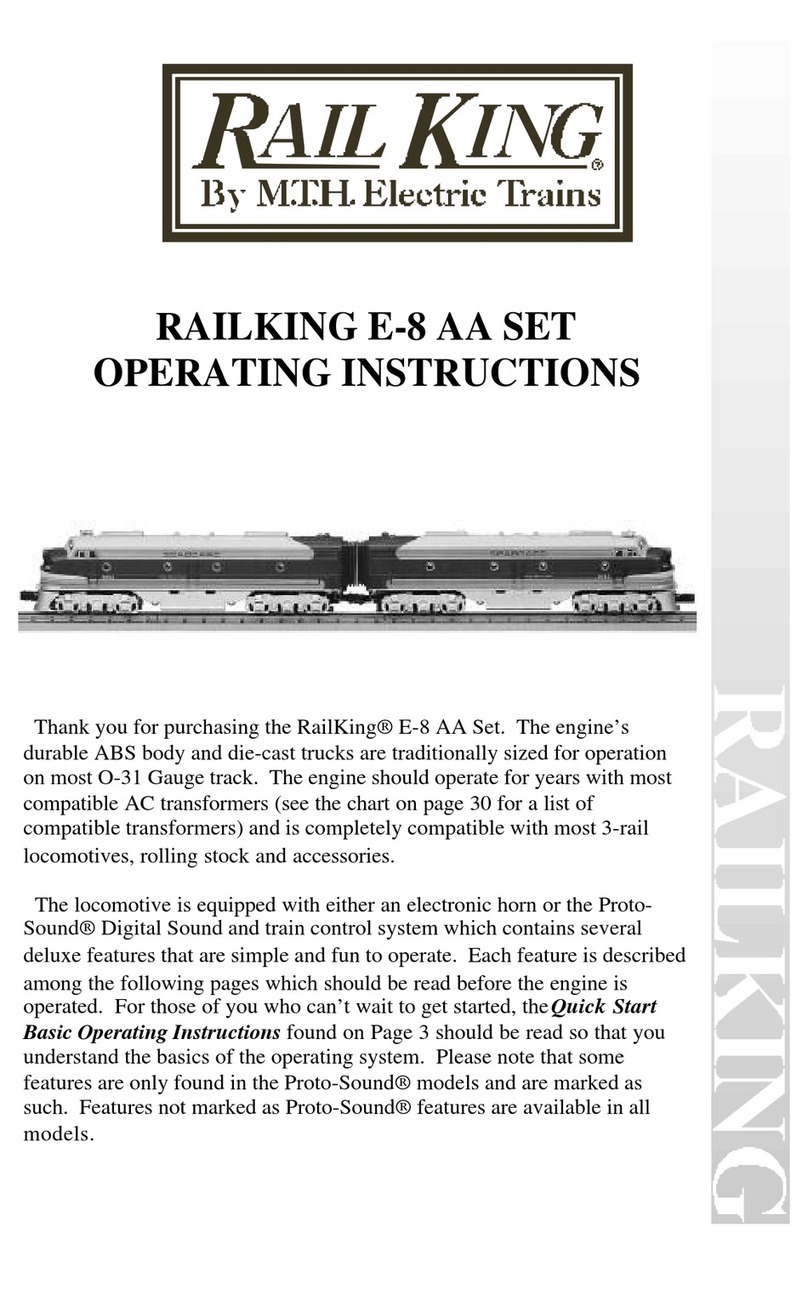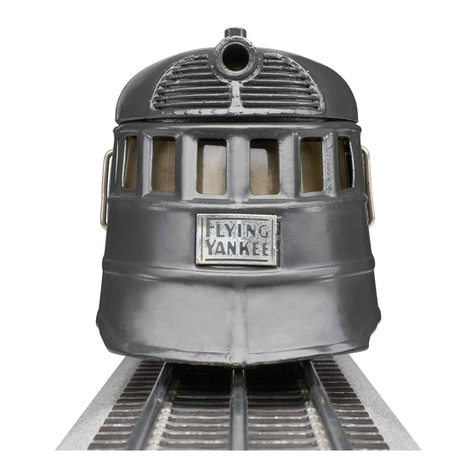
5
Vorbild • Prototype Exploitation dans le réelle • Grootbedrijf
Informations concernant la locomotive réelle
En 1933, la Deutsche Reichsbahn (DRG) commanda à AEG une locomotive
1’Do1’ (disposition d’essieux 140) pour le service de trains rapides lourds.
Le premier exemplaire de la nouvelle série E 18 put être livré en mai 1935 et
fut immédiatement soumise aux essais. Nouveau pour ces locos : la forme
aérodynamique et la première utilisation de la soudure dans d’aussi grandes
proportions.
Les E 18 01-44 et 045-053 furent livrées jusqu’en janvier 1940. Les chemins
de fer d’Autriche commandèrent eux aussi huit machines de ce type
réussi dans une version légèrement modifiée. En 1938, après l’annexion de
l’Autriche, ces locomotives circulaient à la DRG en tant que série E 18.2. A
la fin de la guerre, de nombreuses machines avaient brûlées dans les bom-
bardements ou avaient été détruites par des accidents. Outre les E 18.2 au-
trichiennes, la E 18 42 et la 046 endommagée restèrent elles aussi aux ÖBB.
Dans le cadre du schéma de numérotation en vigueur à partir de 1953, la
E 18 42 reçut le numéro1118.01 et les E 18.2 furent immatriculées 1018.01-08.
La E 18 046, garée, fut reconstruite jusqu’en décembre 1952 en utilisant des
pièces de la E 18 206, déjà réformée car sérieusement endommagée lors
d’une attaque aérienne. « Locomotive hybride », elle circula alors sous le
numéro 1018.101.
Grâce à des années de travail, la DB réussit à remettre 39 machines en
service, y compris les cinq locomotives de la DR. En 1955 furent achevées
en outre, par Krupp, encore deux reconstructions (E 18 054 et 055) à partir de
gros éléments encore disponibles. Les 41 machines circulèrent dans toute
l’Allemagne du sud. A partir de l’été 1974, les118 locomotives désormais
immatriculées conformément aux nouvelles normes informatiques furent
concentrées dans le dépôt de Wurtzbourg. Trois machines
(118 013, 028 et 049) furent même encore repeintes en 1975/76 selon le code
couleur bleu océan/ivoire, peu populaire auprès des amateurs de chemins
de fer. Au début des années 1980, elle perdirent rapidement leur prestige
et au début de l‘été 1984, leur utilisation régulière prit fin. Les dernières 118
furent réformées le 13 juillet 1984.
Actuellement, seule la E 18 047 est en état de marche ; les E 18 03, 08, 19, 24,
31, 204 (ex 1018.04) et 1018.05 purent en outre être préservées.
Informatie van het voorbeeld
Voor de zware sneltreindienst bestelt de Deutsche Reichsbahn (DRG) in
1933 bij AEG een 1’Do1’-locomotief. Het eerste exemplaar van de nieuwe
serie E 18 werd in mei 1935 geleverd en kwam meteen in proefbedrijf. De
gestroomlijnde vorm en de eerste toepassing van lastechniek op grote
schaal waren totaal nieuw bij deze locomotief.
Tot januari 1940 werden de E 18 01-44 en 045-053 aangeleverd. Ook de
Oostenrijkse spoorwegen bestelde acht machines van dit succesvolle
type in licht gewijzigde uitvoering. Na de Anschluss van Oostenrijk in
1938 liepen deze toestellen bij de DRG als serie E 18.2. Tegen het einde
van de wereldoorlog waren vele machines uitgebrand ten gevolge van
bombardementen of door ongevallen onklaar. Naast de Oostenrijkse
E 18.2 bleven na 1945 ook de E 18 42 en de beschadigde 046 bij de ÖBB.
De E 18 42 behield in het nummeringssysteem dat vanaf 1953 van kracht
was de aanduiding 1118.01, de E 18.2 reden dan als 1018.01-08. Tot
december 1958 werd de uitgerangeerde E 18 046 opnieuw opgelapt met
behulp van onderdelen van de ondertussen buiten dienst gestelde
E 18 206, die tijdens een luchtaanval zwaar beschadigd was. Als „her-
mafrodietlocomotief“ reed die dan onder de aanduiding 1018.101.
De DB kon na jarenlange arbeid 39 machines opnieuw in bedrijf nemen,
evenals vijf van de door de DR verworven locs. Bovendien werden in
1955 nog twee replica‘s (E 18 054 en 055) uit beschikbare stukken van
Krupp vervaardigd. De 41 machines reden in heel Zuid-Duitsland. Vanaf
de zomer van 1974 werden de nu computergestuurde machines als 118
locs bij Bw Würzburg samengebracht. In 1975/76 werd het kleurpatroon
van drie machines (118 013, 028 en 049) zelfs nog in de door spoorweg-
liefhebbers ongeliefde combinatie oceaanblauw-ivoor gewijzigd. Begin
de jaren 80 begon de glorie snel af te zwakken en aan het begin van
de zomer 1984 werden ze niet meer ingezet. De laatste 118-toestellen
werden op 31 juli 1984 buiten bedrijf gesteld.
Thans is de E 18 047 bedrijfsklaar, daarnaast konden de
E 18 03, 08, 19, 24, 31, 204 (ex 1018.04) en 1018.05 worden ingezet.
